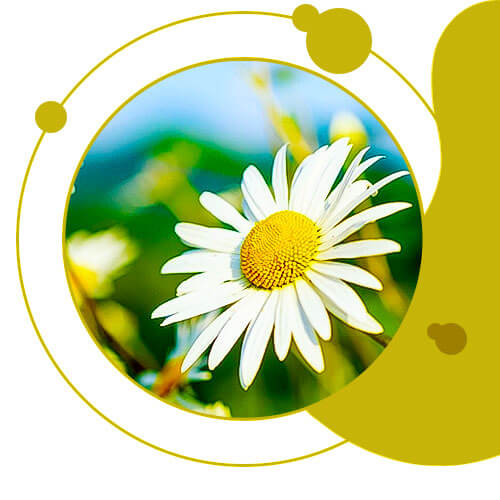Chamomilla
Chamomile flowers contain an oily essence called antimine, tannin, phytosterols and also a bitter substance called antimic acid.
Chamomile is one of the most important drugs known to human and one of the most widely used medicinal plants in Europe, the Middle East, North America, Australia and African countries, which is cultivated mainly for the use of its blue essence and due to its increasing use in the manufacturing, cosmetics, perfumery and food seasoning industries.

. Medicinal properties and annual consumption of chamomile in the world including German and Roman chamomile more 4,000 tons of dried flowers, which are mainly supplied by Hungary, Russia, Argentina, Germany, Czechoslovakia, Finland, Egypt, India and Iran.
1- Treatment of flatulence, skin inflammations and stomachache
2- Brewed chamomile, as an appetizer and digester of food
3- Preparing cosmetics (such as shampoo)
4- Antimicrobial extract and essence
Many medicines are produced of this plant in various forms, including edible and local, whose edible forms include tablets, syrups and ampoules, and its local products such as ointments, oils, creams and lotions are used to treat various wounds and eczema.
Curcormine, as one of the most important active ingredients in turmeric, has anti-liver toxins, anti-inflammatory and antiseptic properties.
Anti-mutagenic, anti-AIDS and anti-oxidant are other recently approved useful properties of turmeric..



